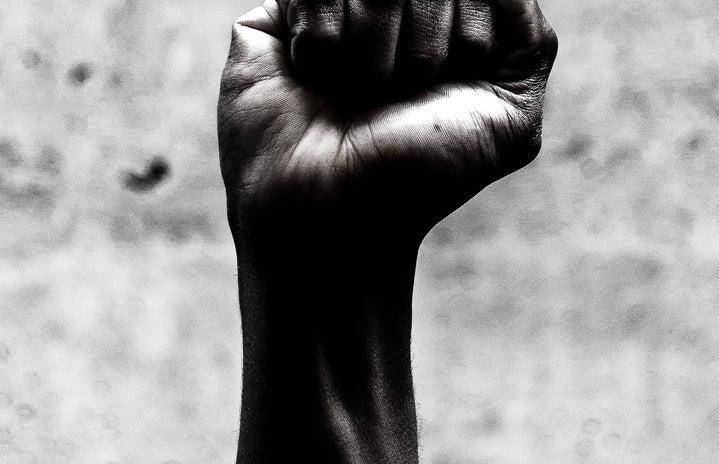Content warning: mentions of gendered and sexual violence
Latin American countries (and by and large, all former colonies) have a history with slavery that cannot, and should not, be erased. Instead, it should be reconciled, repaired, and rectified in its present social composition: racial equality remains an unsolved question in Latin America. Yet, before it can be properly addressed, the relation Latin American countries have with slavery has to be properly understood through a nuanced approach. This is crucially true when we turn to the case of female slaves, whose experiences were remarkably different than those of male slaves. The hidden narrative of domestic slaves, moreover, contrasts greatly from the harrowing images of forced work in plantations — but its realities were in no way more humane. Rio de Janeiro, the capital of Brazil from 1763 to 1960, has inspired artists throughout its history. Jean-Baptiste Debret was one of them, painting throughout the 1830s what he perceived to be the average Brazilian family: a common figure, that of the enslaved woman. Specifically, enslaved women who were separated on the basis of a hierarchy; wet-nurses (the amas-de-leite) occupied the highest position, followed by personal maids (the mucamas) and the rest of the domestic staff. All of them and their histories are equally oppressed and fundamental to a present understanding of the intersection of gender, race, and social class — the legacy of colonialism and slavery.

An edition of the newspaper Diário do Rio de Janeiro, dated from July 24th, 1824, saw a slave owner advertise his desire to “rent an ama-de-leite” to nurse his children. Owning an ama-de-leite was not only a matter of status, but complied to the popular belief that a Black woman’s milk was stronger than a Portuguese woman’s milk. The ama’s responsibilities included breastfeeding and child-rearing, forging a strong attachment between the slave and the white child — hence the perception that amas-de-leite were an integral part of Rio’s nineteenth-century households. Underlying the function of these wet-nurses, however, was the distressing reality of family separation; only enslaved women who had recently given birth could qualify as wet-nurses. Yet, as specified by the Diário do Rio de Janeiro’s edition, they should be “childless.” Amas-de-leite, therefore, were forced to give up their children to feed those of their owners. In some cases, this led to the death of the infants by malnutrition — and in all cases, the separation of families. The condition of slavery, and questions of gender, hindered the enslaved woman’s ability to experience motherhood. And that was just one of the many pains they were forced to endure.
Mucamas, or personal maids, have also been depicted as members of traditional households throughout the nineteenth century. But such an integration is far from the truth. Indeed, mucamas worked closely with elite women, caring for their clothes, hairstyles, and accompanying them in daily walks around the vivid capital of Rio de Janeiro. They were also in charge of small and personal errands, and often dabbled in sewing and lace-making. However, underneath the façade of closeness and trust, there was a harrowing reality of sexual violence. Mucamas were recurrently raped by their masters and perceived as sexual objects by the male elite. Households could also rent them out as prostitutes, in a practice that often led to the spread of sexually transmitted diseases among enslaved women (who had no access to medical care). Given their gender and social position, domestic female slaves were also denied agency, autonomy, and womanhood; treated as property, their history is one of trauma, inequality, and pain.
If we are to address the question of slavery and its rammifications in contemporary Latin American societies, we need to first understand the nuances embedded in this historical dynamic. Women indeed experienced slavery through a different set of oppressive structures when compared to male slaves. And the domestic realm, despite purporting to be relatively inclusive, was one of deep repression. The disproportionate burden endured by Black women — being forced to give up their children, the hypersexualization of their bodies, and the intrinsic lack of sisterhood — have defined a history that continues to be perpetuated today. Twenty-first century Latin America’s challenge is not to ignore its shameful past of slavery. Instead, it is to rectify the roots underlying current issues of racism. Crucially, when it comes to the history of Black women, there has to be a demystification of the romantic view surrounding slavery in the domestic realm. It is by understanding the past that one can effectively challenge the present. The history of slavery and its oppressive structures is not one to be repeated. It is one to be exposed as a perilous example. And that might as well be our greatest challenge —and greatest debt — as Latin Americans.

Information obtained from:
“Experiences in Common: Slavery and ‘Freedom’ in the Process of Rio De Janeiro’s Working-Class Formation (1850—1910).” International Review of Social History55, no. 2 (August 2010): 193–213.
Diário Do Rio De Janeiro, July 24, 1824.
Karasch, Mary C. Slave Life In Rio De Janeiro, 1808-1850.Princeton, N.J.: Princeton University Press, 1987.
Lauderdale Graham, Sandra. House and Street: The Domestic World of Servants and Masters in Nineteenth-Century Rio De Janeiro. Austin : University of Texas Press, 1988.
Maria, Juliana, and Silva Trammel . “Breastfeeding Campaigns and Ethnic Disparity in Brazil: The Representation of a Hegemonic Society and Quasiperfect Experience.” Journal of Black Studies48, no. 5 (January 2017): 431–45.


